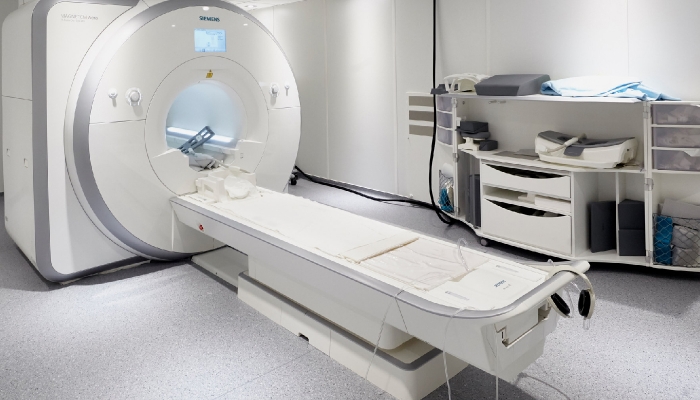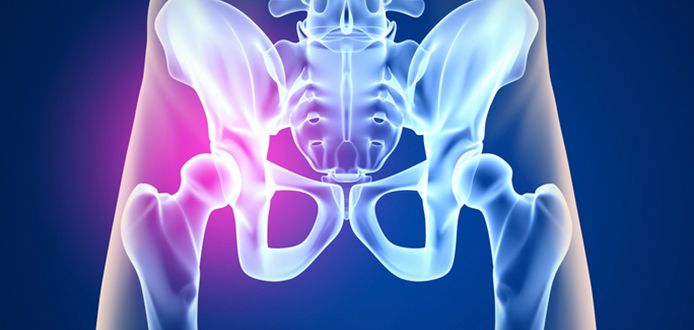Hip MRI examination
Hip MRI examination allows detailed examination of the hip joint, it can be used to diagnose soft tissue injuries, inflammations, tumors, but it is also used to diagnose changes in the joint capsule. Hip MRI is also performed if the X-ray does not show any changes despite the persistent pain.
MRI is an imaging diagnostic procedure that uses a magnetic field to take detailed images of the human body.

What types of diseases does hip MRI examination help diagnose?
MRI can diagnose inflammation, tumors, and other soft tissue lesions. Your doctor may request an examination if you have any of the following complaints or illnesses.
- Long-standing low back pain that cannot be explained by an x-ray or other medical examination
- Hip joint wear
- Bone necrosis (bone dies in some areas)
When it is advised to carry out the examination?
Your doctor may request an examination if you complain of long-standing low back pain, limping, and these complaints are not explained by an x-ray or other medical examination.
How to prepare for the hip MRI examination?
In all cases, it is recommended that your treating physician be consulted for details prior to the MRI examination, although the native examination does not require special preparation.
On the other hand, it is important to know that due to the strong magnetic field, it is forbidden to bring a device or object containing metal into the examination room! This applies to jewelry, piercings in the body, and some makeup products may also contain a substance that affects the success of the test.
Prior to an examination carried out with contrast agent, specialist consultation is essential. Kidney function laboratory results showing creatinine and carbamid values are also required to perform this type of examination. In the case of a contrast agent examination, you should not eat for 6 hours before the examination.

How is it performed?
Examination of the joints is usually done lying on your back. However, some tests may require tilting and retaining the joint to make the best shot.
Following the pre-examination information, the operator will take you to the MR examiner room and then ask you to be seated on the examination bed. The operator adjusts the correct body position, places the coils required for the test, and then the test bed inserts you into the magnetic tube. It is important to remain still during the test, you can only change your body position on the instructions of the operator. The examination takes an average of 30 minutes, while you can communicate with our staff continuously through the built-in microphone and speaker. The machine makes a loud, rattling sound that can be reduced with ear protection.
When is a hip MRI examination can not be carried out?
- The test cannot be performed in the first trimester of pregnancy.
- The test cannot be performed if you have MR incompatible metal, implant, prosthesis (pacemaker, orthopedic metal material (screw, plate, nail, wire), implanted joint prosthesis, artificial limb, implanted defibrillator, neurostimulator, implanted drug dispenser, vascular implants (e.g., clips, vascular occlusion devices), ear implants, metal foreign body (e.g., projectile, splinter), other electronic implants) in your body. Therefore, in the case of an implant, implanted metal, prosthesis, please bring a certificate of its suitability for MR examination (certified by the implanting specialist, institution) for the examination itself, which clearly states: the ability to enter the MR examination room, to perform MR examination and marking the maximum magnetic field strength (1.5 Tesla, 3 Tesla) available for the device or implant. Inform the person performing the test about the implant before the test.
- If the subject weighs more than 200 kilograms, it also depends on the circumference of the abdomen.
- If contrast agent is used, if the eGFR of the renal function is below 45 ml / min, the examination can not be performed.
What to expect after the examination?
The finding alone is not a diagnosis. After the examination, please always consult a specialist with the finding.
The contrast agent used for MRI examination is gadolinium-based. In rare cases, hypersensitivity may occur.
When will the result arrive?
The completed recording will be reviewed by a radiologist and the result will be available in our online system after 5 workdays.

